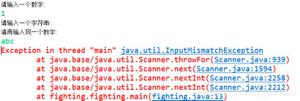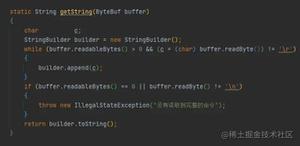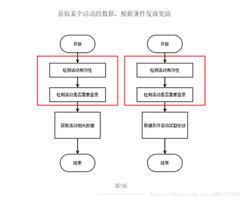浅谈JavaScript 代码简洁之道
测试代码质量的唯一方式:别人看你代码时说 f * k 的次数。
代码质量与其整洁度成正比。干净的代码,既在质量上较为可靠,也为后期维护、升级奠定了良好基础。
本文并不是代码风格指南,而是关于代码的可读性、复用性、扩展性探讨。
我们将从几个方面展开讨论:
- 变量
- 函数
- 对象和数据结构
- 类
- SOLID
- 测试
- 异步
- 错误处理
- 代码风格
- 注释
变量
用有意义且常用的单词命名变量
Bad:
const yyyymmdstr = moment().format('YYYY/MM/DD');
Good:
const currentDate = moment().format('YYYY/MM/DD');
保持统一
可能同一个项目对于获取用户信息,会有三个不一样的命名。应该保持统一,如果你不知道该如何取名,可以去 codelf 搜索,看别人是怎么取名的。
Bad:
getUserInfo();
getClientData();
getCustomerRecord();
Good:
getUser()
每个常量都该命名
可以用buddy.js 或者ESLint 检测代码中未命名的常量。
Bad:
// 三个月之后你还能知道 86400000 是什么吗?
setTimeout(blastOff, 86400000);
Good:
const MILLISECOND_IN_A_DAY = 86400000;
setTimeout(blastOff, MILLISECOND_IN_A_DAY);
可描述
通过一个变量生成了一个新变量,也需要为这个新变量命名,也就是说每个变量当你看到他第一眼你就知道他是干什么的。
Bad:
const ADDRESS = 'One Infinite Loop, Cupertino 95014';
const CITY_ZIP_CODE_REGEX = /^[^,\]+[,\s]+(.+?)s*(d{5})?$/;
saveCityZipCode(ADDRESS.match(CITY_ZIP_CODE_REGEX)[1],
ADDRESS.match(CITY_ZIP_CODE_REGEX)[2]);
Good:
const ADDRESS = 'One Infinite Loop, Cupertino 95014';
const CITY_ZIP_CODE_REGEX = /^[^,\]+[,\s]+(.+?)s*(d{5})?$/;
const [, city, zipCode] = ADDRESS.match(CITY_ZIP_CODE_REGEX) || [];
saveCityZipCode(city, zipCode);
直接了当
Bad:
const locations = ['Austin', 'New York', 'San Francisco'];
locations.forEach((l) => {
doStuff();
doSomeOtherStuff();
// ...
// ...
// ...
// 需要看其他代码才能确定 'l' 是干什么的。
dispatch(l);
});
Good:
const locations = ['Austin', 'New York', 'San Francisco'];
locations.forEach((location) => {
doStuff();
doSomeOtherStuff();
// ...
// ...
// ...
dispatch(location);
});
避免无意义的前缀
如果创建了一个对象 car,就没有必要把它的颜色命名为 carColor。
Bad:
const car = {
carMake: 'Honda',
carModel: 'Accord',
carColor: 'Blue'
};
function paintCar(car) {
car.carColor = 'Red';
}
Good:
const car = {
make: 'Honda',
model: 'Accord',
color: 'Blue'
};
function paintCar(car) {
car.color = 'Red';
}
使用默认值
Bad:
function createMicrobrewery(name) {
const breweryName = name || 'Hipster Brew Co.';
// ...
}
Good:
function createMicrobrewery(name = 'Hipster Brew Co.') {
// ...
}
函数
参数越少越好
如果参数超过两个,使用 ES2015/ES6 的解构语法,不用考虑参数的顺序。
Bad:
function createMenu(title, body, buttonText, cancellable) {
// ...
}
Good:
function createMenu({ title, body, buttonText, cancellable }) {
// ...
}
createMenu({
title: 'Foo',
body: 'Bar',
buttonText: 'Baz',
cancellable: true
});
只做一件事情
这是一条在软件工程领域流传久远的规则。严格遵守这条规则会让你的代码可读性更好,也更容易重构。如果违反这个规则,那么代码会很难被测试或者重用。
Bad:
function emailClients(clients) {
clients.forEach((client) => {
const clientRecord = database.lookup(client);
if (clientRecord.isActive()) {
email(client);
}
});
}
Good:
function emailActiveClients(clients) {
clients
.filter(isActiveClient)
.forEach(email);
}
function isActiveClient(client) {
const clientRecord = database.lookup(client);
return clientRecord.isActive();
}
顾名思义
看函数名就应该知道它是干啥的。
Bad:
function addToDate(date, month) {
// ...
}
const date = new Date();
// 很难知道是把什么加到日期中
addToDate(date, 1);
Good:
function addMonthToDate(month, date) {
// ...
}
const date = new Date();
addMonthToDate(1, date);
只需要一层抽象层
如果函数嵌套过多会导致很难复用以及测试。
Bad:
function parseBetterJSAlternative(code) {
const REGEXES = [
// ...
];
const statements = code.split(' ');
const tokens = [];
REGEXES.forEach((REGEX) => {
statements.forEach((statement) => {
// ...
});
});
const ast = [];
tokens.forEach((token) => {
// lex...
});
ast.forEach((node) => {
// parse...
});
}
Good:
function parseBetterJSAlternative(code) {
const tokens = tokenize(code);
const ast = lexer(tokens);
ast.forEach((node) => {
// parse...
});
}
function tokenize(code) {
const REGEXES = [
// ...
];
const statements = code.split(' ');
const tokens = [];
REGEXES.forEach((REGEX) => {
statements.forEach((statement) => {
tokens.push( /* ... */ );
});
});
return tokens;
}
function lexer(tokens) {
const ast = [];
tokens.forEach((token) => {
ast.push( /* ... */ );
});
return ast;
}
删除重复代码
很多时候虽然是同一个功能,但由于一两个不同点,让你不得不写两个几乎相同的函数。
要想优化重复代码需要有较强的抽象能力,错误的抽象还不如重复代码。所以在抽象过程中必须要遵循 SOLID 原则(SOLID 是什么?稍后会详细介绍)。
Bad:
function showDeveloperList(developers) {
developers.forEach((developer) => {
const expectedSalary = developer.calculateExpectedSalary();
const experience = developer.getExperience();
const githubLink = developer.getGithubLink();
const data = {
expectedSalary,
experience,
githubLink
};
render(data);
});
}
function showManagerList(managers) {
managers.forEach((manager) => {
const expectedSalary = manager.calculateExpectedSalary();
const experience = manager.getExperience();
const portfolio = manager.getMBAProjects();
const data = {
expectedSalary,
experience,
portfolio
};
render(data);
});
}
Good:
function showEmployeeList(employees) {
employees.forEach(employee => {
const expectedSalary = employee.calculateExpectedSalary();
const experience = employee.getExperience();
const data = {
expectedSalary,
experience,
};
switch(employee.type) {
case 'develop':
data.githubLink = employee.getGithubLink();
break
case 'manager':
data.portfolio = employee.getMBAProjects();
break
}
render(data);
})
}
对象设置默认属性
Bad:
const menuConfig = {
title: null,
body: 'Bar',
buttonText: null,
cancellable: true
};
function createMenu(config) {
config.title = config.title || 'Foo';
config.body = config.body || 'Bar';
config.buttonText = config.buttonText || 'Baz';
config.cancellable = config.cancellable !== undefined ? config.cancellable : true;
}
createMenu(menuConfig);
Good:
const menuConfig = {
title: 'Order',
// 'body' key 缺失
buttonText: 'Send',
cancellable: true
};
function createMenu(config) {
config = Object.assign({
title: 'Foo',
body: 'Bar',
buttonText: 'Baz',
cancellable: true
}, config);
// config 就变成了: {title: "Order", body: "Bar", buttonText: "Send", cancellable: true}
// ...
}
createMenu(menuConfig);
不要传 flag 参数
通过 flag 的 true 或 false,来判断执行逻辑,违反了一个函数干一件事的原则。
Bad:
function createFile(name, temp) {
if (temp) {
fs.create(`./temp/${name}`);
} else {
fs.create(name);
}
}
Good:
function createFile(name) {
fs.create(name);
}
function createFileTemplate(name) {
createFile(`./temp/${name}`)
}
避免副作用(第一部分)
函数接收一个值返回一个新值,除此之外的行为我们都称之为副作用,比如修改全局变量、对文件进行 IO 操作等。
当函数确实需要副作用时,比如对文件进行 IO 操作时,请不要用多个函数/类进行文件操作,有且仅用一个函数/类来处理。也就是说副作用需要在唯一的地方处理。
副作用的三大天坑:随意修改可变数据类型、随意分享没有数据结构的状态、没有在统一地方处理副作用。
Bad:
// 全局变量被一个函数引用
// 现在这个变量从字符串变成了数组,如果有其他的函数引用,会发生无法预见的错误。
var name = 'Ryan McDermott';
function splitIntoFirstAndLastName() {
name = name.split(' ');
}
splitIntoFirstAndLastName();
console.log(name); // ['Ryan', 'McDermott'];
Good:
var name = 'Ryan McDermott';
var newName = splitIntoFirstAndLastName(name)
function splitIntoFirstAndLastName(name) {
return name.split(' ');
}
console.log(name); // 'Ryan McDermott';
console.log(newName); // ['Ryan', 'McDermott'];
避免副作用(第二部分)
在 JavaScript 中,基本类型通过赋值传递,对象和数组通过引用传递。以引用传递为例:
假如我们写一个购物车,通过 addItemToCart() 方法添加商品到购物车,修改 购物车数组。此时调用 purchase() 方法购买,由于引用传递,获取的 购物车数组 正好是最新的数据。
看起来没问题对不对?
如果当用户点击购买时,网络出现故障, purchase() 方法一直在重复调用,与此同时用户又添加了新的商品,这时网络又恢复了。那么 purchase() 方法获取到 购物车数组 就是错误的。
为了避免这种问题,我们需要在每次新增商品时,克隆 购物车数组 并返回新的数组。
Bad:
const addItemToCart = (cart, item) => {
cart.push({ item, date: Date.now() });
};
Good:
const addItemToCart = (cart, item) => {
return [...cart, {item, date: Date.now()}]
};
不要写全局方法
在 JavaScript 中,永远不要污染全局,会在生产环境中产生难以预料的 bug。举个例子,比如你在 Array.prototype 上新增一个 diff 方法来判断两个数组的不同。而你同事也打算做类似的事情,不过他的 diff 方法是用来判断两个数组首位元素的不同。很明显你们方法会产生冲突,遇到这类问题我们可以用 ES2015/ES6 的语法来对 Array 进行扩展。
Bad:
Array.prototype.diff = function diff(comparisonArray) {
const hash = new Set(comparisonArray);
return this.filter(elem => !hash.has(elem));
};
Good:
class SuperArray extends Array {
diff(comparisonArray) {
const hash = new Set(comparisonArray);
return this.filter(elem => !hash.has(elem));
}
}
比起命令式我更喜欢函数式编程
函数式变编程可以让代码的逻辑更清晰更优雅,方便测试。
Bad:
const programmerOutput = [
{
name: 'Uncle Bobby',
linesOfCode: 500
}, {
name: 'Suzie Q',
linesOfCode: 1500
}, {
name: 'Jimmy Gosling',
linesOfCode: 150
}, {
name: 'Gracie Hopper',
linesOfCode: 1000
}
];
let totalOutput = 0;
for (let i = 0; i < programmerOutput.length; i++) {
totalOutput += programmerOutput[i].linesOfCode;
}
Good:
const programmerOutput = [
{
name: 'Uncle Bobby',
linesOfCode: 500
}, {
name: 'Suzie Q',
linesOfCode: 1500
}, {
name: 'Jimmy Gosling',
linesOfCode: 150
}, {
name: 'Gracie Hopper',
linesOfCode: 1000
}
];
let totalOutput = programmerOutput
.map(output => output.linesOfCode)
.reduce((totalLines, lines) => totalLines + lines, 0)
封装条件语句
Bad:
if (fsm.state === 'fetching' && isEmpty(listNode)) {
// ...
}
Good:
function shouldShowSpinner(fsm, listNode) {
return fsm.state === 'fetching' && isEmpty(listNode);
}
if (shouldShowSpinner(fsmInstance, listNodeInstance)) {
// ...
}
尽量别用“非”条件句
Bad:
function isDOMNodeNotPresent(node) {
// ...
}
if (!isDOMNodeNotPresent(node)) {
// ...
}
Good:
function isDOMNodePresent(node) {
// ...
}
if (isDOMNodePresent(node)) {
// ...
}
避免使用条件语句
Q:不用条件语句写代码是不可能的。
A:绝大多数场景可以用多态替代。
Q:用多态可行,但为什么就不能用条件语句了呢?
A:为了让代码更简洁易读,如果你的函数中出现了条件判断,那么说明你的函数不止干了一件事情,违反了函数单一原则。
Bad:
class Airplane {
// ...
// 获取巡航高度
getCruisingAltitude() {
switch (this.type) {
case '777':
return this.getMaxAltitude() - this.getPassengerCount();
case 'Air Force One':
return this.getMaxAltitude();
case 'Cessna':
return this.getMaxAltitude() - this.getFuelExpenditure();
}
}
}
Good:
class Airplane {
// ...
}
// 波音777
class Boeing777 extends Airplane {
// ...
getCruisingAltitude() {
return this.getMaxAltitude() - this.getPassengerCount();
}
}
// 空军一号
class AirForceOne extends Airplane {
// ...
getCruisingAltitude() {
return this.getMaxAltitude();
}
}
// 赛纳斯飞机
class Cessna extends Airplane {
// ...
getCruisingAltitude() {
return this.getMaxAltitude() - this.getFuelExpenditure();
}
}
避免类型检查(第一部分)
JavaScript 是无类型的,意味着你可以传任意类型参数,这种自由度很容易让人困扰,不自觉的就会去检查类型。仔细想想是你真的需要检查类型还是你的 API 设计有问题?
Bad:
function travelToTexas(vehicle) {
if (vehicle instanceof Bicycle) {
vehicle.pedal(this.currentLocation, new Location('texas'));
} else if (vehicle instanceof Car) {
vehicle.drive(this.currentLocation, new Location('texas'));
}
}
Good:
function travelToTexas(vehicle) {
vehicle.move(this.currentLocation, new Location('texas'));
}
避免类型检查(第二部分)
如果你需要做静态类型检查,比如字符串、整数等,推荐使用 TypeScript,不然你的代码会变得又臭又长。
Bad:
function combine(val1, val2) {
if (typeof val1 === 'number' && typeof val2 === 'number' ||
typeof val1 === 'string' && typeof val2 === 'string') {
return val1 + val2;
}
throw new Error('Must be of type String or Number');
}
Good:
function combine(val1, val2) {
return val1 + val2;
}
不要过度优化
现代浏览器已经在底层做了很多优化,过去的很多优化方案都是无效的,会浪费你的时间,想知道现代浏览器优化了哪些内容,请点这里。
Bad:
// 在老的浏览器中,由于 `list.length` 没有做缓存,每次迭代都会去计算,造成不必要开销。
// 现代浏览器已对此做了优化。
for (let i = 0, len = list.length; i < len; i++) {
// ...
}
Good:
for (let i = 0; i < list.length; i++) {
// ...
}
删除弃用代码
很多时候有些代码已经没有用了,但担心以后会用,舍不得删。
如果你忘了这件事,这些代码就永远存在那里了。
放心删吧,你可以在代码库历史版本中找他它。
Bad:
function oldRequestModule(url) {
// ...
}
function newRequestModule(url) {
// ...
}
const req = newRequestModule;
inventoryTracker('apples', req, 'www.inventory-awesome.io');
Good:
function newRequestModule(url) {
// ...
}
const req = newRequestModule;
inventoryTracker('apples', req, 'www.inventory-awesome.io');
对象和数据结构
用 get、set 方法操作数据
这样做可以带来很多好处,比如在操作数据时打日志,方便跟踪错误;在 set 的时候很容易对数据进行校验…
Bad:
function makeBankAccount() {
// ...
return {
balance: 0,
// ...
};
}
const account = makeBankAccount();
account.balance = 100;
Good:
function makeBankAccount() {
// 私有变量
let balance = 0;
function getBalance() {
return balance;
}
function setBalance(amount) {
// ... 在更新 balance 前,对 amount 进行校验
balance = amount;
}
return {
// ...
getBalance,
setBalance,
};
}
const account = makeBankAccount();
account.setBalance(100);
使用私有变量
可以用闭包来创建私有变量
Bad:
const Employee = function(name) {
this.name = name;
};
Employee.prototype.getName = function getName() {
return this.name;
};
const employee = new Employee('John Doe');
console.log(`Employee name: ${employee.getName()}`);
// Employee name: John Doe
delete employee.name;
console.log(`Employee name: ${employee.getName()}`);
// Employee name: undefined
Good:
function makeEmployee(name) {
return {
getName() {
return name;
},
};
}
const employee = makeEmployee('John Doe');
console.log(`Employee name: ${employee.getName()}`);
// Employee name: John Doe
delete employee.name;
console.log(`Employee name: ${employee.getName()}`);
// Employee name: John Doe
类
使用 class
在 ES2015/ES6 之前,没有类的语法,只能用构造函数的方式模拟类,可读性非常差。
Bad:
// 动物
const Animal = function(age) {
if (!(this instanceof Animal)) {
throw new Error('Instantiate Animal with `new`');
}
this.age = age;
};
Animal.prototype.move = function move() {};
// 哺乳动物
const Mammal = function(age, furColor) {
if (!(this instanceof Mammal)) {
throw new Error('Instantiate Mammal with `new`');
}
Animal.call(this, age);
this.furColor = furColor;
};
Mammal.prototype = Object.create(Animal.prototype);
Mammal.prototype.constructor = Mammal;
Mammal.prototype.liveBirth = function liveBirth() {};
// 人类
const Human = function(age, furColor, languageSpoken) {
if (!(this instanceof Human)) {
throw new Error('Instantiate Human with `new`');
}
Mammal.call(this, age, furColor);
this.languageSpoken = languageSpoken;
};
Human.prototype = Object.create(Mammal.prototype);
Human.prototype.constructor = Human;
Human.prototype.speak = function speak() {};
Good:
// 动物
class Animal {
constructor(age) {
this.age = age
};
move() {};
}
// 哺乳动物
class Mammal extends Animal{
constructor(age, furColor) {
super(age);
this.furColor = furColor;
};
liveBirth() {};
}
// 人类
class Human extends Mammal{
constructor(age, furColor, languageSpoken) {
super(age, furColor);
this.languageSpoken = languageSpoken;
};
speak() {};
}
链式调用
这种模式相当有用,可以在很多库中发现它的身影,比如 jQuery、Lodash 等。它让你的代码简洁优雅。实现起来也非常简单,在类的方法最后返回 this 可以了。
Bad:
class Car {
constructor(make, model, color) {
this.make = make;
this.model = model;
this.color = color;
}
setMake(make) {
this.make = make;
}
setModel(model) {
this.model = model;
}
setColor(color) {
this.color = color;
}
save() {
console.log(this.make, this.model, this.color);
}
}
const car = new Car('Ford','F-150','red');
car.setColor('pink');
car.save();
Good:
class Car {
constructor(make, model, color) {
this.make = make;
this.model = model;
this.color = color;
}
setMake(make) {
this.make = make;
return this;
}
setModel(model) {
this.model = model;
return this;
}
setColor(color) {
this.color = color;
return this;
}
save() {
console.log(this.make, this.model, this.color);
return this;
}
}
const car = new Car('Ford','F-150','red')
.setColor('pink');
.save();
不要滥用继承
很多时候继承被滥用,导致可读性很差,要搞清楚两个类之间的关系,继承表达的一个属于关系,而不是包含关系,比如 Human->Animal vs. User->UserDetails
Bad:
class Employee {
constructor(name, email) {
this.name = name;
this.email = email;
}
// ...
}
// TaxData(税收信息)并不是属于 Employee(雇员),而是包含关系。
class EmployeeTaxData extends Employee {
constructor(ssn, salary) {
super();
this.ssn = ssn;
this.salary = salary;
}
// ...
}
Good:
class EmployeeTaxData {
constructor(ssn, salary) {
this.ssn = ssn;
this.salary = salary;
}
// ...
}
class Employee {
constructor(name, email) {
this.name = name;
this.email = email;
}
setTaxData(ssn, salary) {
this.taxData = new EmployeeTaxData(ssn, salary);
}
// ...
}
SOLID
SOLID 是几个单词首字母组合而来,分别表示 单一功能原则、开闭原则、里氏替换原则、接口隔离原则以及依赖反转原则。
单一功能原则
如果一个类干的事情太多太杂,会导致后期很难维护。我们应该厘清职责,各司其职减少相互之间依赖。
Bad:
class UserSettings {
constructor(user) {
this.user = user;
}
changeSettings(settings) {
if (this.verifyCredentials()) {
// ...
}
}
verifyCredentials() {
// ...
}
}
Good:
class UserAuth {
constructor(user) {
this.user = user;
}
verifyCredentials() {
// ...
}
}
class UserSetting {
constructor(user) {
this.user = user;
this.auth = new UserAuth(this.user);
}
changeSettings(settings) {
if (this.auth.verifyCredentials()) {
// ...
}
}
}
}
开闭原则
“开”指的就是类、模块、函数都应该具有可扩展性,“闭”指的是它们不应该被修改。也就是说你可以新增功能但不能去修改源码。
Bad:
class AjaxAdapter extends Adapter {
constructor() {
super();
this.name = 'ajaxAdapter';
}
}
class NodeAdapter extends Adapter {
constructor() {
super();
this.name = 'nodeAdapter';
}
}
class HttpRequester {
constructor(adapter) {
this.adapter = adapter;
}
fetch(url) {
if (this.adapter.name === 'ajaxAdapter') {
return makeAjaxCall(url).then((response) => {
// 传递 response 并 return
});
} else if (this.adapter.name === 'httpNodeAdapter') {
return makeHttpCall(url).then((response) => {
// 传递 response 并 return
});
}
}
}
function makeAjaxCall(url) {
// 处理 request 并 return promise
}
function makeHttpCall(url) {
// 处理 request 并 return promise
}
Good:
class AjaxAdapter extends Adapter {
constructor() {
super();
this.name = 'ajaxAdapter';
}
request(url) {
// 处理 request 并 return promise
}
}
class NodeAdapter extends Adapter {
constructor() {
super();
this.name = 'nodeAdapter';
}
request(url) {
// 处理 request 并 return promise
}
}
class HttpRequester {
constructor(adapter) {
this.adapter = adapter;
}
fetch(url) {
return this.adapter.request(url).then((response) => {
// 传递 response 并 return
});
}
}
里氏替换原则
名字很唬人,其实道理很简单,就是子类不要去重写父类的方法。
Bad:
// 长方形
class Rectangle {
constructor() {
this.width = 0;
this.height = 0;
}
setColor(color) {
// ...
}
render(area) {
// ...
}
setWidth(width) {
this.width = width;
}
setHeight(height) {
this.height = height;
}
getArea() {
return this.width * this.height;
}
}
// 正方形
class Square extends Rectangle {
setWidth(width) {
this.width = width;
this.height = width;
}
setHeight(height) {
this.width = height;
this.height = height;
}
}
function renderLargeRectangles(rectangles) {
rectangles.forEach((rectangle) => {
rectangle.setWidth(4);
rectangle.setHeight(5);
const area = rectangle.getArea();
rectangle.render(area);
});
}
const rectangles = [new Rectangle(), new Rectangle(), new Square()];
renderLargeRectangles(rectangles);
Good:
class Shape {
setColor(color) {
// ...
}
render(area) {
// ...
}
}
class Rectangle extends Shape {
constructor(width, height) {
super();
this.width = width;
this.height = height;
}
getArea() {
return this.width * this.height;
}
}
class Square extends Shape {
constructor(length) {
super();
this.length = length;
}
getArea() {
return this.length * this.length;
}
}
function renderLargeShapes(shapes) {
shapes.forEach((shape) => {
const area = shape.getArea();
shape.render(area);
});
}
const shapes = [new Rectangle(4, 5), new Rectangle(4, 5), new Square(5)];
renderLargeShapes(shapes);
接口隔离原则
JavaScript 几乎没有接口的概念,所以这条原则很少被使用。官方定义是“客户端不应该依赖它不需要的接口”,也就是接口最小化,把接口解耦。
Bad:
class DOMTraverser {
constructor(settings) {
this.settings = settings;
this.setup();
}
setup() {
this.rootNode = this.settings.rootNode;
this.animationModule.setup();
}
traverse() {
// ...
}
}
const $ = new DOMTraverser({
rootNode: document.getElementsByTagName('body'),
animationModule() {} // Most of the time, we won't need to animate when traversing.
// ...
});
Good:
class DOMTraverser {
constructor(settings) {
this.settings = settings;
this.options = settings.options;
this.setup();
}
setup() {
this.rootNode = this.settings.rootNode;
this.setupOptions();
}
setupOptions() {
if (this.options.animationModule) {
// ...
}
}
traverse() {
// ...
}
}
const $ = new DOMTraverser({
rootNode: document.getElementsByTagName('body'),
options: {
animationModule() {}
}
});
依赖反转原则
说就两点:
- 高层次模块不能依赖低层次模块,它们依赖于抽象接口。
- 抽象接口不能依赖具体实现,具体实现依赖抽象接口。
总结下来就两个字,解耦。
Bad:
// 库存查询
class InventoryRequester {
constructor() {
this.REQ_METHODS = ['HTTP'];
}
requestItem(item) {
// ...
}
}
// 库存跟踪
class InventoryTracker {
constructor(items) {
this.items = items;
// 这里依赖一个特殊的请求类,其实我们只是需要一个请求方法。
this.requester = new InventoryRequester();
}
requestItems() {
this.items.forEach((item) => {
this.requester.requestItem(item);
});
}
}
const inventoryTracker = new InventoryTracker(['apples', 'bananas']);
inventoryTracker.requestItems();
Good:
// 库存跟踪
class InventoryTracker {
constructor(items, requester) {
this.items = items;
this.requester = requester;
}
requestItems() {
this.items.forEach((item) => {
this.requester.requestItem(item);
});
}
}
// HTTP 请求
class InventoryRequesterHTTP {
constructor() {
this.REQ_METHODS = ['HTTP'];
}
requestItem(item) {
// ...
}
}
// webSocket 请求
class InventoryRequesterWS {
constructor() {
this.REQ_METHODS = ['WS'];
}
requestItem(item) {
// ...
}
}
// 通过依赖注入的方式将请求模块解耦,这样我们就可以很轻易的替换成 webSocket 请求。
const inventoryTracker = new InventoryTracker(['apples', 'bananas'], new InventoryRequesterHTTP());
inventoryTracker.requestItems();
测试
随着项目变得越来越庞大,时间线拉长,有的老代码可能半年都没碰过,如果此时上线,你有信心这部分代码能正常工作吗?测试的覆盖率和你的信心是成正比的。
PS: 如果你发现你的代码很难被测试,那么你应该优化你的代码了。
单一化
Bad:
import assert from 'assert';
describe('MakeMomentJSGreatAgain', () => {
it('handles date boundaries', () => {
let date;
date = new MakeMomentJSGreatAgain('1/1/2015');
date.addDays(30);
assert.equal('1/31/2015', date);
date = new MakeMomentJSGreatAgain('2/1/2016');
date.addDays(28);
assert.equal('02/29/2016', date);
date = new MakeMomentJSGreatAgain('2/1/2015');
date.addDays(28);
assert.equal('03/01/2015', date);
});
});
Good:
import assert from 'assert';
describe('MakeMomentJSGreatAgain', () => {
it('handles 30-day months', () => {
const date = new MakeMomentJSGreatAgain('1/1/2015');
date.addDays(30);
assert.equal('1/31/2015', date);
});
it('handles leap year', () => {
const date = new MakeMomentJSGreatAgain('2/1/2016');
date.addDays(28);
assert.equal('02/29/2016', date);
});
it('handles non-leap year', () => {
const date = new MakeMomentJSGreatAgain('2/1/2015');
date.addDays(28);
assert.equal('03/01/2015', date);
});
});
异步
不再使用回调
不会有人愿意去看嵌套回调的代码,用 Promises 替代回调吧。
Bad:
import { get } from 'request';
import { writeFile } from 'fs';
get('https://en.wikipedia.org/wiki/Robert_Cecil_Martin', (requestErr, response) => {
if (requestErr) {
console.error(requestErr);
} else {
writeFile('article.html', response.body, (writeErr) => {
if (writeErr) {
console.error(writeErr);
} else {
console.log('File written');
}
});
}
});
Good:
get('https://en.wikipedia.org/wiki/Robert_Cecil_Martin')
.then((response) => {
return writeFile('article.html', response);
})
.then(() => {
console.log('File written');
})
.catch((err) => {
console.error(err);
});
Async/Await 比起 Promises 更简洁
Bad:
import { get } from 'request-promise';
import { writeFile } from 'fs-promise';
get('https://en.wikipedia.org/wiki/Robert_Cecil_Martin')
.then((response) => {
return writeFile('article.html', response);
})
.then(() => {
console.log('File written');
})
.catch((err) => {
console.error(err);
});
Good:
import { get } from 'request-promise';
import { writeFile } from 'fs-promise';
async function getCleanCodeArticle() {
try {
const response = await get('https://en.wikipedia.org/wiki/Robert_Cecil_Martin');
await writeFile('article.html', response);
console.log('File written');
} catch(err) {
console.error(err);
}
}
错误处理
不要忽略抛异常
Bad:
try {
functionThatMightThrow();
} catch (error) {
console.log(error);
}
Good:
try {
functionThatMightThrow();
} catch (error) {
// 这一种选择,比起 console.log 更直观
console.error(error);
// 也可以在界面上提醒用户
notifyUserOfError(error);
// 也可以把异常传回服务器
reportErrorToService(error);
// 其他的自定义方法
}
不要忘了在 Promises 抛异常
Bad:
getdata()
.then((data) => {
functionThatMightThrow(data);
})
.catch((error) => {
console.log(error);
});
Good:
getdata()
.then((data) => {
functionThatMightThrow(data);
})
.catch((error) => {
// 这一种选择,比起 console.log 更直观
console.error(error);
// 也可以在界面上提醒用户
notifyUserOfError(error);
// 也可以把异常传回服务器
reportErrorToService(error);
// 其他的自定义方法
});
代码风格
代码风格是主观的,争论哪种好哪种不好是在浪费生命。市面上有很多自动处理代码风格的工具,选一个喜欢就行了,我们来讨论几个非自动处理的部分。
常量大写
Bad:
const DAYS_IN_WEEK = 7;
const daysInMonth = 30;
const songs = ['Back In Black', 'Stairway to Heaven', 'Hey Jude'];
const Artists = ['ACDC', 'Led Zeppelin', 'The Beatles'];
function eraseDatabase() {}
function restore_database() {}
class animal {}
class Alpaca {}
Good:
const DAYS_IN_WEEK = 7;
const DAYS_IN_MONTH = 30;
const SONGS = ['Back In Black', 'Stairway to Heaven', 'Hey Jude'];
const ARTISTS = ['ACDC', 'Led Zeppelin', 'The Beatles'];
function eraseDatabase() {}
function restoreDatabase() {}
class Animal {}
class Alpaca {}
先声明后调用
就像我们看报纸文章一样,从上到下看,所以为了方便阅读把函数声明写在函数调用前面。
Bad:
class PerformanceReview {
constructor(employee) {
this.employee = employee;
}
lookupPeers() {
return db.lookup(this.employee, 'peers');
}
lookupManager() {
return db.lookup(this.employee, 'manager');
}
getPeerReviews() {
const peers = this.lookupPeers();
// ...
}
perfReview() {
this.getPeerReviews();
this.getManagerReview();
this.getSelfReview();
}
getManagerReview() {
const manager = this.lookupManager();
}
getSelfReview() {
// ...
}
}
const review = new PerformanceReview(employee);
review.perfReview();
Good:
class PerformanceReview {
constructor(employee) {
this.employee = employee;
}
perfReview() {
this.getPeerReviews();
this.getManagerReview();
this.getSelfReview();
}
getPeerReviews() {
const peers = this.lookupPeers();
// ...
}
lookupPeers() {
return db.lookup(this.employee, 'peers');
}
getManagerReview() {
const manager = this.lookupManager();
}
lookupManager() {
return db.lookup(this.employee, 'manager');
}
getSelfReview() {
// ...
}
}
const review = new PerformanceReview(employee);
review.perfReview();
注释
只有业务逻辑需要注释
代码注释不是越多越好。
Bad:
function hashIt(data) {
// 这是初始值
let hash = 0;
// 数组的长度
const length = data.length;
// 循环数组
for (let i = 0; i < length; i++) {
// 获取字符代码
const char = data.charCodeAt(i);
// 修改 hash
hash = ((hash << 5) - hash) + char;
// 转换为32位整数
hash &= hash;
}
}
Good:
function hashIt(data) {
let hash = 0;
const length = data.length;
for (let i = 0; i < length; i++) {
const char = data.charCodeAt(i);
hash = ((hash << 5) - hash) + char;
// 转换为32位整数
hash &= hash;
}
}
删掉注释的代码
git 存在的意义就是保存你的旧代码,所以注释的代码赶紧删掉吧。
Bad:
doStuff();
// doOtherStuff();
// doSomeMoreStuff();
// doSoMuchStuff();
Good:
doStuff();
不要记日记
记住你有 git!,git log 可以帮你干这事。
Bad:
/**
* 2016-12-20: 删除了 xxx
* 2016-10-01: 改进了 xxx
* 2016-02-03: 删除了第12行的类型检查
* 2015-03-14: 增加了一个合并的方法
*/
function combine(a, b) {
return a + b;
}
Good:
function combine(a, b) {
return a + b;
}
注释不需要高亮
注释高亮,并不能起到提示的作用,反而会干扰你阅读代码。
Bad:
////////////////////////////////////////////////////////////////////////////////
// Scope Model Instantiation
////////////////////////////////////////////////////////////////////////////////
$scope.model = {
menu: 'foo',
nav: 'bar'
};
////////////////////////////////////////////////////////////////////////////////
// Action setup
////////////////////////////////////////////////////////////////////////////////
const actions = function() {
// ...
};
Good:
$scope.model = {
menu: 'foo',
nav: 'bar'
};
const actions = function() {
// ...
};
翻译自 ryanmcdermott 的 《clean-code-javascript》,本文对原文进行了一些修改。
以上是 浅谈JavaScript 代码简洁之道 的全部内容, 来源链接: utcz.com/z/339547.html









